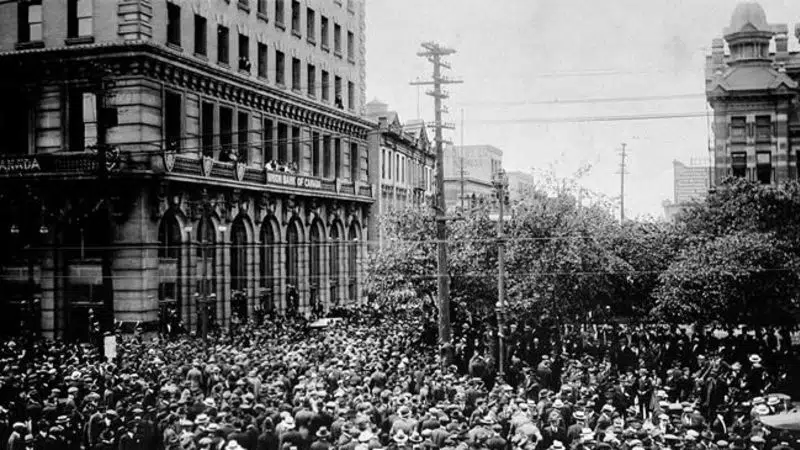
Winnipeg General Strike 100 years ago led to bloodshed, political change
WINNIPEG — The Winnipeg General Strike, which started 100 years ago Wednesday, lasted only six weeks.
But the fallout from the unprecedented display of strength by both ordinary workers and anti-union forces continues to be felt to this day.
While the workers returned to their jobs — those who weren’t fired anyway — and strike leaders were arrested, the walkout by 30,000 unionized and non-unionized labourers led to a royal commission, renewed unity in the labour movement, and the creation of a new political party.


